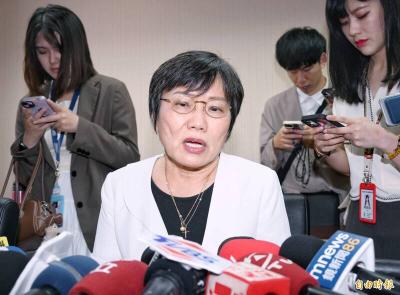The National Communications Commission’s (NCC) announcement this week that it plans to lift the digital cable television service penetration rate to 100 percent by 2014 has been questioned by a number of media experts.
Last year, the Executive Yuan set what was considered at the time the ambitious goal of raising the rate to 75 percent by 2015.
Although the nation is already scheduled to turn off analog signals for terrestrial television service in July, digital cable service has achieved a penetration rate of only about 10 percent, the commission said.
Since 2010, the nation’s top media regulator has taken several measures to accomplish what many have characterized as a near impossible task.
When Dafu Media (大富媒體), which is an affiliate of the Fubon Group, wanted to purchase the cable systems of multiple system operator Kbro Co two years ago, the commission approved the deal only after Dafu undertook to ensure 50 percent of its subscribers would be using digital cable service by 2015.
In addition, cable operators scheduled to apply for the renewal of their licenses in 2015 are required to show they plan to provide customers with digital service. Last year, the commission rejected applications from several cable operators to raise their monthly service fees on the grounds that they had made no progress in offering digital cable service.
Meanwhile, the commission has been encouraging cable operators to participate in an experiment, in which they lend households one or two set-top boxes, thereby allowing consumers to familiarize themselves with digital cable service.
The experiment will enable consumers to watch digital channels for no extra charge. The commission is hoping that a limited period of access to digital channels will encourage more consumers to switch from analog to digital service.
Prior to the Lunar New Year holiday, NCC spokesperson Chen Jeng-chang (陳正倉) said the commission was considering allowing cable operators to turn off analog signals once 60 percent of subscribers have switched to digital service. Previously, the commission had insisted that 80 percent of customers must be subscribed to digital cable services for analog service to be discontinued.
While recognizing the commission’s efforts, Weber Lai (賴祥蔚), head of National Taiwan University of the Arts’ Graduate School of Applied Media Arts, expressed serious doubts as to whether digital cable service would reach a penetration rate of 50 percent by 2015.
Several studies have already said that both cable operators and users need stronger incentives to switch to digital service, he said.
“Most users want to use the service before they decide to subscribe to it,” Lai said. “This shows that many of them do not have sufficient information on the benefits digital service will bring. They are unable to imagine how the new service will benefit them.”
Using his own experience as an example, Lai said he had yet to see the value of subscribing to the digital service.
“Surfing through the channels has become such a hassle. If I want to watch HBO and press channel No. 65, I have to wait for about a second for the program to start, but I always get impatient and press number 6 again, and then the system tells me: ‘Sorry, there is no channel 656,’ and I get to play this game every day,” Lai said.
The government needs to inform people about the advantages of using digital service so that they embrace it wholeheartedly, which is going to take time, he added.
Lai said that the lack of quality digital content, such as high-definition (HD) programs, could also explain why people are reluctant to switch.
“Investing in HD programs is an expensive thing to do, and the channels may find themselves unable to recoup even their -production costs given that the national market is relatively small,” Lai said.
“As a result, they are likely to choose formats that are both cheap and popular, such as talk shows where the hosts and guests talk about everything from politics to their private lives. The question is whether these types of program are marketable at an international level. If you tell people that they need to subscribe to a digital service, they might well ask if they are going to end up watching the same shows, just via digital rather than analog technology,” he added.
Professor Luo Shih-hung (羅世宏) of National Chung Cheng University says the government should invest more in the production of high-quality digital content on terrestrial TV channels, which can be viewed free of charge. That would probably help to increase the audience for digital content.
“Some have said that cable and terrestrial services are competitors, but I think that they should work together,” Luo said. “If people are used to watching digital content through the terrestrial TV service, that could help create greater demand for digital content on cable.”
Funding remains the biggest problem in producing the high--definition programs. Some TV operators estimate that a channel needs to invest a minimum of NT$800 million (US$26.7 million) in the production of high-definition programs.
NCC Commissioner Weng Hsiao-ling (翁曉玲) has said that although some channels claim to provide high-definition programs, the teams producing these so-called “high-definition” programs do not necessarily employ designated high-definition equipment or technology.
“The channels simply use analog equipment to produce these programs, transfer them to -standard-definition images first and later broadcast them using high--definition signals,” she said.
Funding is a major issue facing television companies worldwide, Weng said. For example, Australia used to have a children’s channel that aired high-definition programs, but it folded two years after it was launched, having been unable to break even.
Cable users might have only 30 to 40 channels out of more than 100 that are actually able to provide high-definition programming, Weng said.
However, demand is certain to rise over the long term because the younger generation is growing up watching digital content, she added.
“If you ask college students whether they still read newspapers or watch TV, most will say they spend most of their time online,” Weng said. “If you go further and ask them what they do online, they are likely to say they watch downloaded movies or play online games. Their understanding of digital content is very different to ours.”
Cable operators should learn from the experience of other countries and develop creative digital content, not just focus on high--definition programs, she added.
She said that the commission is considering signing an administrative contract with cable operators nationwide on setting a definite date when the nation’s analog cable services will be switched off.
With government funding, Public Television Service (PTS) launched the nation’s first high-definition channel in 2008 on a trial basis.
Last year, DaAi TV network — affiliated with the Buddhist Compassion Relief Tzu Chi Foundation — launched the “DaAi 2 Channel,” the nation’s first privately funded high-definition channel.
Formosa TV is using high-definition technology to broadcast Major League Baseball games.
However, the nation’s three oldest terrestrial TV networks — Taiwan Television, China Television Co and Chinese Television System — have yet to commit to daily broadcasts of high-definition programs.
The apparent lack of interest displayed by the three networks in providing digital content concerns commission officials.
“Turning off the analog signal for terrestrial television will be a result of political maneuvering,” a commission official said on condition of anonymity. “If the programs are not digital themselves, then a full digital service still cannot be offered.”

Chinese Nationalist Party (KMT) Chairman Eric Chu (朱立倫), spokeswoman Yang Chih-yu (楊智伃) and Legislator Hsieh Lung-chieh (謝龍介) would be summoned by police for questioning for leading an illegal assembly on Thursday evening last week, Minister of the Interior Liu Shyh-fang (劉世芳) said today. The three KMT officials led an assembly outside the Taipei City Prosecutors’ Office, a restricted area where public assembly is not allowed, protesting the questioning of several KMT staff and searches of KMT headquarters and offices in a recall petition forgery case. Chu, Yang and Hsieh are all suspected of contravening the Assembly and Parade Act (集會遊行法) by holding

PRAISE: Japanese visitor Takashi Kubota said the Taiwanese temple architecture images showcased in the AI Art Gallery were the most impressive displays he saw Taiwan does not have an official pavilion at the World Expo in Osaka, Japan, because of its diplomatic predicament, but the government-backed Tech World pavilion is drawing interest with its unique recreations of works by Taiwanese artists. The pavilion features an artificial intelligence (AI)-based art gallery showcasing works of famous Taiwanese artists from the Japanese colonial period using innovative technologies. Among its main simulated displays are Eastern gouache paintings by Chen Chin (陳進), Lin Yu-shan (林玉山) and Kuo Hsueh-hu (郭雪湖), who were the three young Taiwanese painters selected for the East Asian Painting exhibition in 1927. Gouache is a water-based

Taiwan would welcome the return of Honduras as a diplomatic ally if its next president decides to make such a move, Minister of Foreign Affairs Lin Chia-lung (林佳龍) said yesterday. “Of course, we would welcome Honduras if they want to restore diplomatic ties with Taiwan after their elections,” Lin said at a meeting of the legislature’s Foreign Affairs and National Defense Committee, when asked to comment on statements made by two of the three Honduran presidential candidates during the presidential campaign in the Central American country. Taiwan is paying close attention to the region as a whole in the wake of a

OFF-TARGET: More than 30,000 participants were expected to take part in the Games next month, but only 6,550 foreign and 19,400 Taiwanese athletes have registered Taipei city councilors yesterday blasted the organizers of next month’s World Masters Games over sudden timetable and venue changes, which they said have caused thousands of participants to back out of the international sporting event, among other organizational issues. They also cited visa delays and political interference by China as reasons many foreign athletes are requesting refunds for the event, to be held from May 17 to 30. Jointly organized by the Taipei and New Taipei City governments, the games have been rocked by numerous controversies since preparations began in 2020. Taipei City Councilor Lin Yen-feng (林延鳳) said yesterday that new measures by